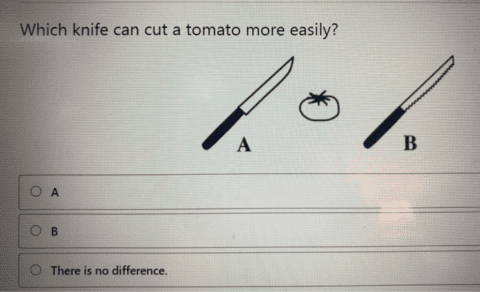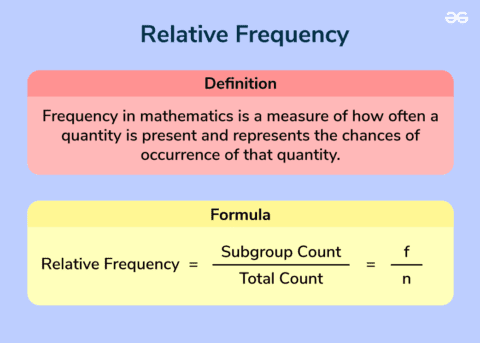The Math section focuses on the areas of math that play the biggest role in college and career success:
- Algebra
- Advanced Math
- Problem-Solving and Data Analysis
- Geometry and Trigonometry
Like the Reading and Writing section, the Math section is divided into 2 modules. Over the course of the Math section, you’ll answer multiple-choice and student-produced response questions that measure your fluency with, understanding of, and ability to apply the math concepts, skills, and practices that are most essential.
Approximately 30% of Math questions are set in context. These in-context (“word”) questions require you to consider a science, social studies, or real-world scenario and apply your math skills and knowledge, along with an understanding of the context, to determine the answer to each.
Types of Math Tested
The math questions are divided into four categories. Questions from all four categories appear in each test module. Across each module, questions are arranged from easiest to hardest, allowing you to have the best opportunity to demonstrate what you know and can do.
| Type of Math | Number of Questions |
|---|---|
| Algebra | 13–15 |
| Advanced Math | 13–15 |
| Problem-Solving and Data Analysis | 5–7 |
| Geometry and Trigonometry | 5–7 |
Algebra
Algebra measures the ability to analyze, fluently solve, and create linear equations and inequalities as well as analyze and fluently solve equations and systems of equations using multiple techniques.
Algebra includes the following types of questions:
- Linear equations in 1 variable
- Linear equations in 2 variables
- Linear functions
- Systems of 2 linear equations in 2 variables
- Linear inequalities in 1 or 2 variables
Advanced Math
Advanced Math focuses on the math you’ll need to pursue further study in disciplines such as science or economics and for career opportunities in the STEM fields of science, technology, engineering, and math.
The Advanced Math area measures skills and knowledge central for progression to more advanced math courses, including demonstrating an understanding of absolute value, quadratic, exponential, polynomial, rational, radical, and other nonlinear equations.
Advanced Math includes the following types of questions:
- Equivalent expressions
- Nonlinear equations in 1 variable
- Systems of equations in 2 variables
- Nonlinear functions
Problem-Solving and Data Analysis
Problem-Solving and Data Analysis measures the ability to apply quantitative reasoning about ratios, rates, and proportional relationships; understand and apply unit rate; and analyze and interpret one- and two-variable data.
This group of skills is about being quantitatively literate and demonstrating a command of the math that resonates throughout college courses, career training programs, and everyday life.
Problem-Solving and Data Analysis includes the following skills and knowledge testing points:
- Ratios, rates, proportional relationships, and units
- Percentages
- One-variable data: distributions and measures of center and spread
- Two-variable data: models and scatterplots
- Probability and conditional probability
- Inference from sample statistics and margin of error
- Evaluating statistical claims: observational studies and experiments
Geometry and Trigonometry
Geometry and Trigonometry measure the ability to solve problems that focus on the following:
- Area and volume formulas
- Lines, angles, and triangles
- Right triangles and trigonometry
- Circles
SAT Calculator Use
Calculators are important tools. To succeed after high school, you’ll need to know how—and when—to use them. The digital SAT Suite allows calculator use throughout the Math section, so you decide when it makes sense to use a calculator and when it won’t be as useful. This more accurately matches the way you use calculators in school and in the real world.
The Math section includes some questions where it’s better not to use a calculator, even though you’re allowed to. In these cases, students who make use of structure or their ability to reason may be able to use their time more effectively than students who use a calculator.
Resources
Full-Length Linear SAT Practice Tests (Nonadaptive)
Download 6 official SAT practice tests for free. The PDF versions of linear (nonadaptive) practice test forms are recommended only for students who will test with paper-based accommodations on test day.
If you have an approved accommodation to take the digital SAT on a paper form, you can download and print the practice tests available below to practice and prepare. If you are approved for a paper braille test, contact Services for Students with Disabilities (SSD) for a practice test.
Practice Test Tips
You’ll need a printer, pencil, calculator, and timer to take the full-length, linear tests.
Here are some tips:
- Mark your answers in the test pages. It’s okay to guess. You won’t lose any points if you guess incorrectly.
- The timing of the digital SAT paper form is longer than the SAT that is delivered digitally because, unlike the digitally delivered test, the paper forms are nonadaptive and more questions are required to assess your knowledge and skills.
- When you’re ready to score your test, use the scoring guide and answer explanations provided with each practice test below to check your answers.
Timing
The number of questions and standard time allotted for each section is described below. If you are approved for extended time and plan to use it when you take the SAT, you should adjust the times below accordingly when you practice.
| Component | Time Allotted (minutes) | Number of Questions/Tasks |
|---|---|---|
| Reading and Writing | 78 (two 39-minute modules) | 66 |
| Math | 86 (two 43-minute modules) | 54 |
| Total | 164 | 120 |



